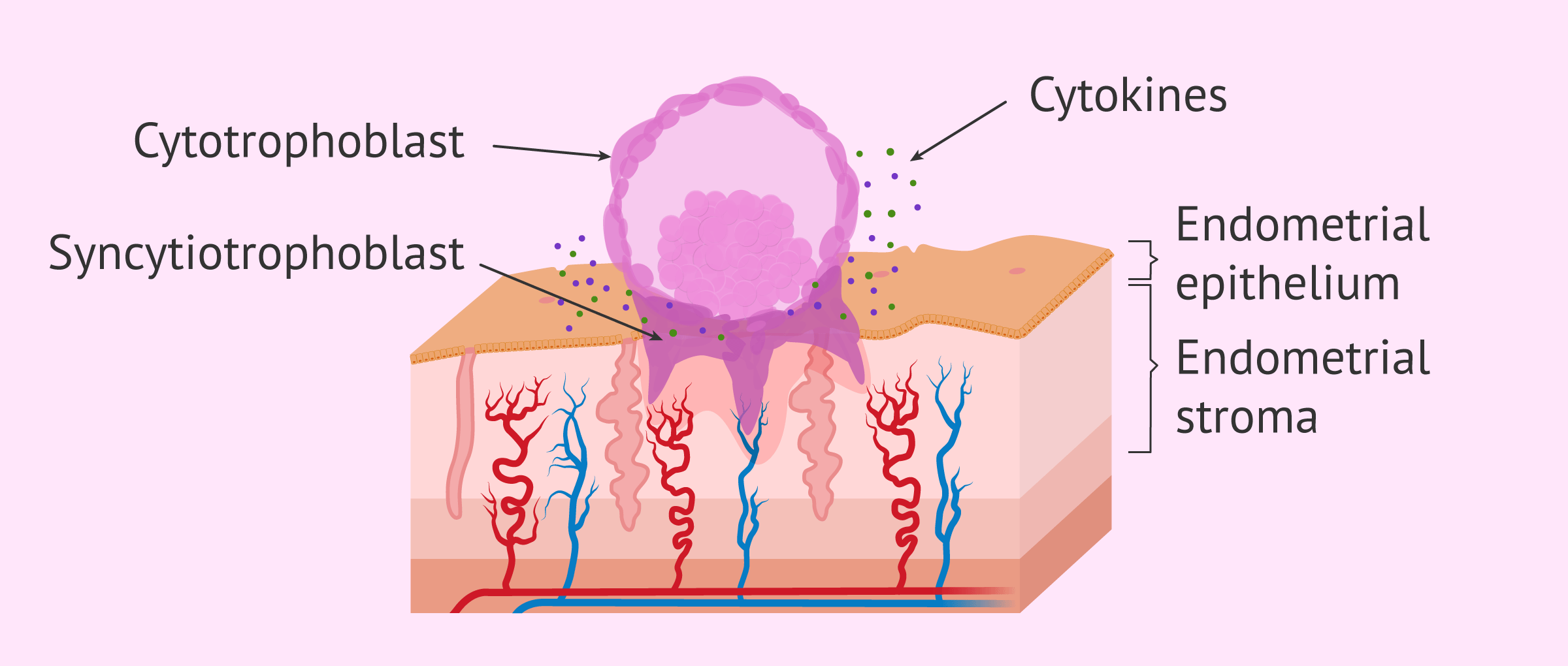The last phase of embryo implantation is invasion into the endometrium.
Thanks to the action of cytokines, the embryonic trophoectoderm specializes and differentiates into cytrophoblast and syncytiotrophoblast. The latter is the one that acquires the invasive capacity and begins to digest the cells of the endometrial epithelium until it reaches the stroma. Finally, the blastocyst will penetrate into the interior, will be embedded by the endometrial stroma and will be in contact with the maternal blood to nourish itself.
Read the full article on: What is embryo implantation and when does it occur? ( 44).
By Antonio Forgiarini M.D., M.Sc. (gynecologist), Blanca Paraíso M.D., Ph.D., M.Sc. (gynecologist), Manuel Muñoz M.D., Ph.D. (gynecologist), Sara Salgado B.Sc., M.Sc. (embryologist), Silvia Jiménez Bravo B.Sc., Ph.D. (senior clinical embryologist), Zaira Salvador B.Sc., M.Sc. (embryologist) and Cristina Algarra Goosman B.Sc., M.Sc. (psychologist).
Last Update: 10/02/2019
